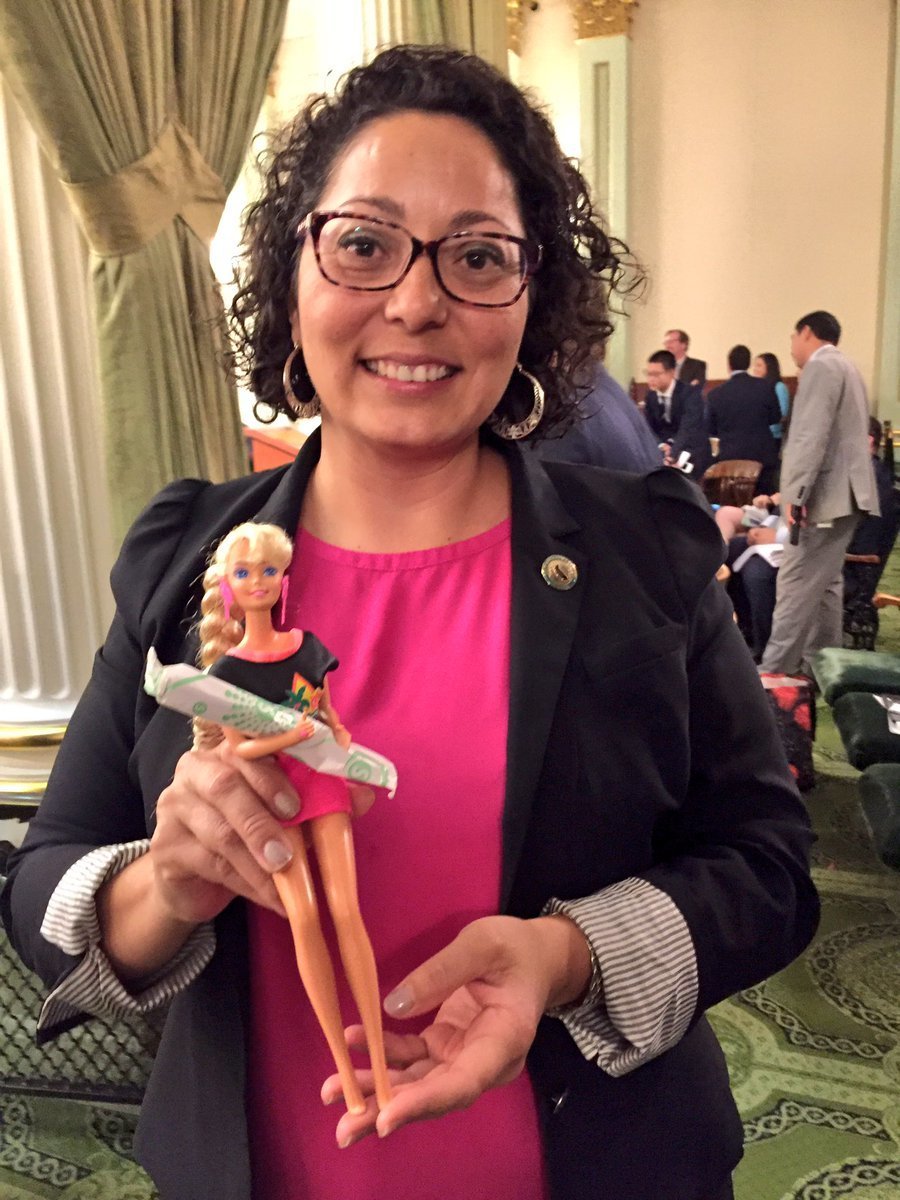On Thursday, October 12, Governor Jerry Brown of California signed the Assembly 10 Bill. The bill, spearheaded by Assemblywoman Cristina Garcia, will require all middle and high schools in the state to stock half of their bathrooms with free menstrual products if at least 40 percent of their student population falls at or below the federal poverty threshold. In her efforts to lobby for the bill, Garcia argued that taking measures to provide girls from low-income households with access to menstrual products that they may not otherwise be able to afford would have positive effects on their education and overall livelihood. “Menstrual products are medical necessities and it is important we recognize not having access to these products impacts a young girl’s education,” she said in a statement. “I’ve heard stories from many young girls that struggle with their period on a monthly basis, affecting their schooling, morale and health.” More from CafeMom: Woman Was Reported to HR for Having Period Cramps & People Are Outraged akoseff/Twitter It’s estimated that the average woman in the US spends over $2,200 per year on tampons, pads, and period supplies. But all over the US, the United Kingdom, South Africa, and countless other places around the world, there are thousands of girls who lack access to menstrual hygiene products and are forced to skip school for days at a time each month. At the Pine Ridge Indian Reservation in South Dakota, for example, 44 percent of residents live in poverty, and high schoolers tell the Huffington Post that the struggle to afford menstrual products is simply a part of their everyday life. In March, a UK woman went viral after she started a petition to get free pads and tampons in schools inspired by a BBC article on the number of British girls missing school for their periods, as well as her own experiences as a teen who couldn’t afford tampons. More from CafeMom: Woman With Endometriosis Boldly Shows the Dramatic Changes Her Body Goes Through California isn’t the first state in the US to take steps to address this problem. In late September of 2017, Illinois announced that it too would be making feminine hygiene products available for free in middle and high schools. A portion of its written law explains the importance of this decision, bearing strong similarities to Cristina Garcia’s arguments: “When students do not have access to affordable feminine hygiene products, they may miss multiple days of school every month,” the law reads. In 2016, New York City Mayor Bill de Blasio signed legislation making tampons free in NYC schools, shelters, and jails. In a press release, Julissa Ferreras-Copeland, the councilwoman who proposed the bill, said, “Providing young women with pads and tampons in schools will help them stay focused on their learning and sends a message about value and respect for their bodies.” While each of these bills was proposed in different states by different people, all three highlight and put serious effort into solving a very real issue. All kids should have access to the tools they need in order to succeed. When poor children and their families have to choose between spending their last dollars on feminine hygiene products or food, young girls are often left to suffer as a result. Having schools provide free, unfettered access to pads and tampons will do wonders for instilling comfort and security for girls in need.



title: “Schools Are Giving Girls Free Pads The Reason Why Is So Important” ShowToc: true date: “2024-10-12” author: “Blair Cook”
On Thursday, October 12, Governor Jerry Brown of California signed the Assembly 10 Bill. The bill, spearheaded by Assemblywoman Cristina Garcia, will require all middle and high schools in the state to stock half of their bathrooms with free menstrual products if at least 40 percent of their student population falls at or below the federal poverty threshold. In her efforts to lobby for the bill, Garcia argued that taking measures to provide girls from low-income households with access to menstrual products that they may not otherwise be able to afford would have positive effects on their education and overall livelihood. “Menstrual products are medical necessities and it is important we recognize not having access to these products impacts a young girl’s education,” she said in a statement. “I’ve heard stories from many young girls that struggle with their period on a monthly basis, affecting their schooling, morale and health.” More from CafeMom: Woman Was Reported to HR for Having Period Cramps & People Are Outraged akoseff/Twitter It’s estimated that the average woman in the US spends over $2,200 per year on tampons, pads, and period supplies. But all over the US, the United Kingdom, South Africa, and countless other places around the world, there are thousands of girls who lack access to menstrual hygiene products and are forced to skip school for days at a time each month. At the Pine Ridge Indian Reservation in South Dakota, for example, 44 percent of residents live in poverty, and high schoolers tell the Huffington Post that the struggle to afford menstrual products is simply a part of their everyday life. In March, a UK woman went viral after she started a petition to get free pads and tampons in schools inspired by a BBC article on the number of British girls missing school for their periods, as well as her own experiences as a teen who couldn’t afford tampons. More from CafeMom: Woman With Endometriosis Boldly Shows the Dramatic Changes Her Body Goes Through California isn’t the first state in the US to take steps to address this problem. In late September of 2017, Illinois announced that it too would be making feminine hygiene products available for free in middle and high schools. A portion of its written law explains the importance of this decision, bearing strong similarities to Cristina Garcia’s arguments: “When students do not have access to affordable feminine hygiene products, they may miss multiple days of school every month,” the law reads. In 2016, New York City Mayor Bill de Blasio signed legislation making tampons free in NYC schools, shelters, and jails. In a press release, Julissa Ferreras-Copeland, the councilwoman who proposed the bill, said, “Providing young women with pads and tampons in schools will help them stay focused on their learning and sends a message about value and respect for their bodies.” While each of these bills was proposed in different states by different people, all three highlight and put serious effort into solving a very real issue. All kids should have access to the tools they need in order to succeed. When poor children and their families have to choose between spending their last dollars on feminine hygiene products or food, young girls are often left to suffer as a result. Having schools provide free, unfettered access to pads and tampons will do wonders for instilling comfort and security for girls in need.


